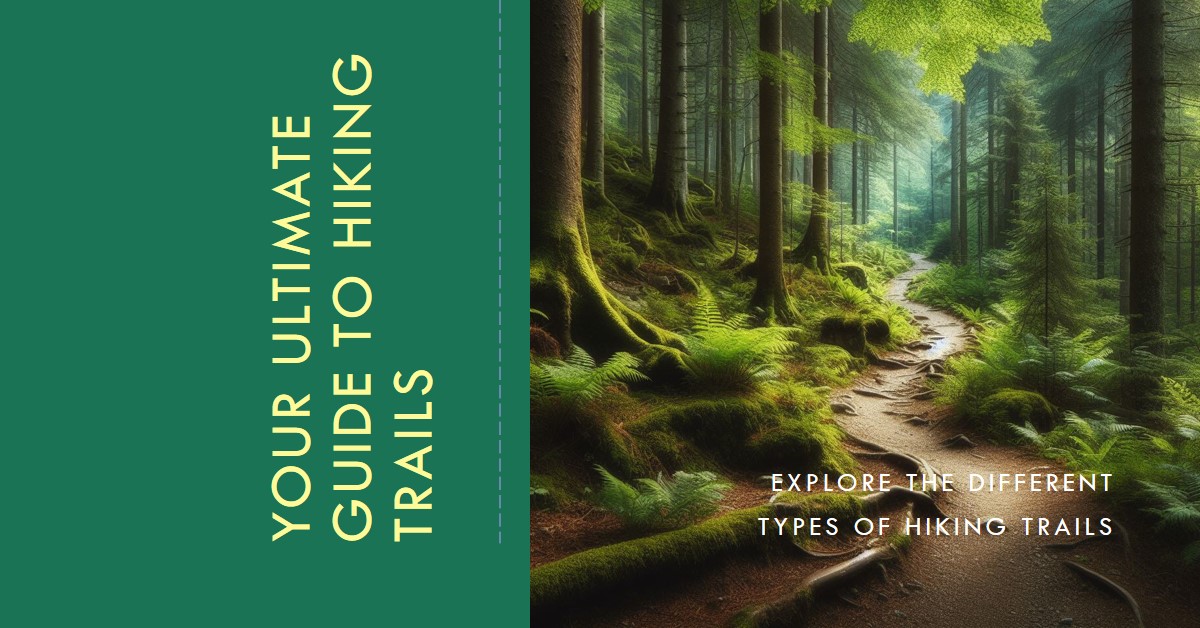Crucial elements to look for in well-fitting hiking boots include a secure heel, ample toe space, and a comfortable stride. The ideal boots offer maximum ankle support, causing no discomfort or pain upon wearing.
For the adventurous at heart who enjoy exploring the great outdoors, hiking boots are indispensable. About to take on a challenging climb or trekking nature paths, the right footwear is fundamental for an enjoyable and relaxed experience. Yet, the daunting task of finding the perfect hiking boots can prove overwhelming due to the myriad of choices available in the market.
In this comprehensive guide, we demystify the process with key pointers on how well your hiking boots should fit, aiming for unparalleled comfort and support. No matter if you’re an amateur hiker or seasoned trailblazer, a well-fitting pair of boots can be the key to averting nuisances like blisters, unease, and potential injuries.
Table of Contents
Discovering Your Perfect Fit
Mastering shoe sizing and measurements: Understanding the nuances of shoe sizes and measurements is key when scouting for an ideal pair of hiking boots. Ascertain your foot’s shape and type: Prior to any purchase, identify your foot’s shape and type for the most suitable fit. Take care to measure your feet precisely, and browse detailed guides or seek expert opinions on achieving accurate measurements. Keep in mind the importance of both foot length and width, as well as any distinctive foot conditions you might have. Glean expert insights on accurate foot measurement: Professional guidance from boot fitters or podiatrists can be invaluable in measuring your feet precisely. These experts can assist in pinpointing specific points of concern, such as heel stability or arch support. Remember, a proper fit is critical to enhance comfort and avert discomfort or injury during hiking.
Assessing Comfort and Support
Suitable heel and arch support are paramount when sizing up hiking boots. A comfortable heel fits snugly without causing slip or friction, ensuring both stability and blister prevention. Adequate arch support uniformly disperses weight and minimizes foot strain. Review the toe-box space and wideness too, your toes should have space for slight movement, without feeling cramped, which could cause discomfort or pain during longer hikes. Additionally, sufficient cushion and shock-absorption features are crucial to minimize foot and joint impact. Be upon the lookout for boots with generous padding and durable midsoles that ensure optimal comfort across various terrains.
Ensuring the Perfect Fit
Comprehending various lacing methods will help you secure your hiking boots for the perfect fit. Different lacing styles can ease pressure points and offer improved support. Evaluate fit by trying a range of boots to discover the pair that best complements your foot shape and size. Pay attention to proper heel slippage and toe movement during walks or climbs. Ascertain minimal heel slippage to avert blisters and discomfort; ample toe room for wiggling also prevents toe injuries on sharp descents.
| Fit Indicator | Fit Done Right | Fit Gone Wrong |
|---|---|---|
| Heel Slippage | Minimum or no slippage | Severe slippage |
| Toe Movement | Sufficient wiggle room | Cramped and restrictive toes |
Bear in mind to try boots with the socks meant for your hikes as this can influence the fit. The fit evaluation process needs time, rush it not, for this could save you from future issues during your hiking endeavors.
Interacting with Common Fit Problems
Securing the correct fit in hiking boots is vital for a comfortable hiking experience and to protect the feet from trail mishaps. Addressing issues like tightness and pressure points is essential for a good fit. If the boots feel snug, consider stretching them, or you might add a thicker insole for increased comfortability. Similarly, pressure points can be neutralized by using moleskin or specific padding to lower friction issues.
Dealing with blisters and hot spots is another common challenge. Wearing sweat-wicking socks and using ointments or anti-chafing balms can reduce friction and prevent blisters. In case blisters do occur, ensure they are cleaned and dressed appropriately to keep infections at bay.
For those with narrow or wide feet, finding a right fitting boot might require some extra effort. Brands that offer varying widths or customizable lacing systems can be beneficial. Trying multiple options and consulting with informed staff can help locate the best options for your unique foot shape.
The Importance of Socks and Insoles
The roles of socks and insoles in securing a good fit for your hiking boots is significant. The right socks help achieve optimal fit and stave off discomfort. Seek moisture-absorbing, padded socks that provide cushioning and reduce friction. Insoles, conversely, can boost both comfort and support thanks to their extra cushioning and arched design. Different combinations of socks and insoles can be experimented with to customize your boots’ fit. For example, combining thicker socks and thinner insoles can fill extra space within the boot, and thinner socks with thicker insoles can offer more support and fewer signs of foot fatigue. Ultimately, finding the perfect socks and insoles combination will not only improve the boot’s fit but contribute to a more pleasing and comfortable hiking experience.
Trial Hiking in Your Boots
Finding the perfect hiking boots can be a journey on its own. Testing them on a trial hike is crucial, be aware of the feel of the boots, and note any discomfort areas. Traversing different terrains like stony paths, muddy trails, or uneven surfaces can give a better understanding of the boots’ performance in varying conditions. After the hike, assess the fit by looking for rubs or blisters. Make necessary adjustments such as loosening or tightening the laces to provide a snug fit without causing pressure points. Your feet can swell up during the hike, so consider this factor when adjusting the boots.
The perfect fit for hiking boots means a snug heel, comfortable toe movement, and a pleasant walking experience. With good ankle support and no discomfort or injury during use, your hiking boots are fitted well.
Hiking boots are a critical gear for all outdoor aficionados. Whether you choose to conquer a challenging hike or just enjoy exploring nature trails, wearing the right footwear ensures a comfortable, enjoyable journey. Nevertheless, finding the perfect pairs can be a daunting task.
Given the plethora of options in the market, choosing a suitable pair can seem overwhelming. This guide simplifies the process by providing key tips about the ideal fit for hiking boots, aiming for optimum comfort and support. Hiking beginners or seasoned backpackers alike, understanding the right fit of hiking boots can help avoid blisters, discomfort, and potential injuries.
Returns class=”wp-block-heading”>Zeroing in on The Right Size
Grasping shoe sizes and measurements: Understanding shoe sizing and measurements can be a crucial step in finding the right size of your hiking boots. Identifying your foot type and shape: Prior to making a purchase, establish your foot type and shape for the best fit by measuring your feet accurately. Seek specialized guides or expert advice on how to get your foot measurements right. Make sure to consider the length and width of your feet, as well as any particular foot conditions. Reliable advice on accurate foot measurement: Expert advice from boot fitters or podiatrists can provide crucial insights on accurate foot measurements. They can assist you in identifying specific needs such as heel stability or arch support. Remember, the right fit is crucial for comfort and preventing discomfort or injuries during hikes.
Assessing Comfort and Support
When determining the exact fit of hiking boots, significant factors to consider are heel and arch support. Your heel should be held firmly, preventing any slipping and friction, avoiding blisters. Adequate arch support is essential to distribute weight evenly and reduce foot strain. Notice the width and space in the toe box. Your toes should be able to wiggle comfortably, avoiding tightness that could lead to discomfort and pain during extended hikes. In addition, cushy internals and shock-absorbing elements can greatly minimize the impact on your feet and joints. Boots with sufficient padding and responsive middle soles are ideal for comfort on various terrains.
Ensure The Perfect Fit
Understanding various lacing techniques can be instrumental to attain the perfect fit for your hiking boots different lacing methods can aid in relieving pressure points and providing better support. Evaluate a variety of boots to find the perfect fit for your foot shape and size. Check for the correct level of heel slippage and toe movement while walking or climbing. Paramount to prevent blisters and discomfort is to ensure minimal slippage at the heel. Simultaneously, ensure ample room for your toes to move and wiggle freely without feeling crammed. Proper toe movement is key to prevent toe injuries on steep descents.
| Fit Sign | Perfect Fit | Wrong Fit |
|---|---|---|
| Heel Slippage | No or minimal slippage | Excessive slippage |
| Toe Movement | Comfortable wriggle room | Crammed, restricted toe movement |
Aim to test the fit wearing the socks you’d use during hikes as it can impact the overall fit. Allow enough time to properly evaluate the fit to stave off any discomfort or foot problems that middle of your outdoor escapades.
Addressing Common Fit Issues
Finding the right fit for your hiking boots is pivotal for a comfortable experience and avoiding common foot problems on the trail. Tight. If the boots feel tight, they may need to be stretched or a thicker insole could be added for comfort. Pressure points can be managed with moleskin or special padding that can reduce friction.
Handling blisters and hot spots is another common fitting issue. Moisture-absorbing socks and anti-chafing balms can reduce friction and prevent blisters. If blisters do occur, it is imperative to treat them properly to avoid infection.
For those with wide or narrow feet, finding the right fit can be challenging. Brands that offer options in diverse widths or customizable lacing systems could be a solution. Trying multiple pairs and consulting experienced staff can aid in the search for the perfect pair for your unique foot shape.
Role of Socks and Insoles
Socks and insoles play a significant role in achieving an ideal fit with your hiking boots. Selecting the correct socks is crucial for optimal fit and evading discomfort. Look for padded, moisture-absorbing socks that cushion and reduce friction. On the other hand, insoles can enhance comfort and provide extra arch support. Using various sock and insole combinations can tailor the feel of the boots to your needs. For instance, thicker socks coupled with a thin insole can occupy any excess space in the boots, while thinner socks combined with a thicker insole can offer more support and relieve foot exhaustion. In the end, finding the ideal combination of socks and insoles will not only improve hiking but also contribute to a more pleasurable hiking experience.
For optimum comfort, hiking boots should have a secure heel hold, plenty of toe wiggle space, and should feel relaxed while walking. They should deliver effective ankle support and result in no aching or discomfort during use.
An indispensable part of the outdoor enthusiast’s equipment, hiking boots can make or break your adventure – whether that’s tackling a challenging hike or meandering through gentle nature trails. However, finding that perfect fit in hiking boots can frequently seem like a daunting task.
Surrounded by an array of options, the task of selecting the right pair can feel overwhelming. However, in this guide, we impart key tips on how your hiking boots should fit, ensuring maximum comfort and support. Whether you’re a beginner or a seasoned hiker, a correct understanding of the boot fit can help prevent inconveniences like blister formation, discomfort, and potential injuries.
Returns class=”wp-block-heading”>How to Choose the Correct Size
Grasping shoe sizes and proportions: Understanding shoe sizing and measurements is a pivotal first step in choosing the ideal hiking boots size. Identifying your foot shape and type: Prior to making a purchase, it’s important to identify your foot type and shape, and measure your feet accurately. Seek expert advice or follow specialized guides on how to measure your feet correctly. Keeping in mind the dimensions of your foot - both length and width, as well as any specific foot conditions, is critical. Receiving expert guidance on accurate foot measurement: Seek out expert advice from seasoned boot fitters or podiatrists who can provide useful insights on how to accurately measure your feet. They can help you identify any unique needs or factors to consider, like arch support or heel stability. Remember, the right fit is crucial to enhance comfort and avoid discomfort or injury while hiking.
Assessing Comfort and Support
Assessing comfort and support is critical in finding well-fitting hiking boots – two essential factors to this are the heel and arch support. The heel should fit snugly, preventing slipping or rubbing, providing stability, and avoiding blisters. Adequate arch support is crucial for even weight distribution and reducing strain on the feet. Another factor to consider is the width and space of the toe box. There should be ample room for your toes to wiggle without resulting in a cramped and uncomfortable space that can lead to discomfort and pain in long hikes. Additionally, shock-absorption features along with cushioning are essential for mitigating impact on your feet and joints. Boots with ample padding and a responsive midsole are perfect for providing optimum comfort on varying terrains.
Solidify the Proper Fit
Comprehending the importance of various lacing techniques plays a key role in perfecting the fit of your hiking boots. Different lacing techniques can alleviate pressure points and provide better foot support. Assess the fit by trying on a myriad of boots to find the one that best suits your unique foot size and shape. Look for proper heel slippage and toe movement when walking or climbing. Ensure that there is minimal slippage at the heel to prevent blisters and discomfort. Simultaneously, your toes should have sufficient room to wriggle without feeling cramped. Proper toe movement prevents toe injuries on steep descents.
| Indicator of Fit | Proper Fit | Improper Fit |
|---|---|---|
| Heel Slippage | No or minimal slippage | Excessive slippage |
| Space for Toe Movement | Ample wriggle room | Crowded, restricted toe space |
Always remember to try on boots wearing the socks you intend to use for your hikes, as this can influence the overall fit of the boot. Don’t rush the fitting process; taking the time to carefully evaluate the fit can help prevent discomfort and potential foot problems during your trekking trips.
Addressing Common Fitting Issues
For hiking boots, maintaining a proper fit is imperative to ensure comfort and avoid common foot issues while on the trail. Issues like a tight fit and pressure points need to be mitigated for an optimal fit. If the boots feel a bit tight, they might need to be stretched, or a thicker insole could be added for a more comfortable fit. Similarly, using moleskin or specialized padding can reduce friction and alleviate pressure points.
Managing blisters and hotspots is another common fit concern. Wearing moisture-absorbing socks and using lubricants or anti-chafing balms can help reduce friction and prevent blisters. If blisters do occur, it is important to clean and apply dressings appropriately to avoid infection.
For those with narrow or wide feet, finding the right fit can be a distinct challenge. Brands offering different widths or customizable latching systems could provide a solution. Trying on a variety of pairs and consulting with knowledgeable staff can guide you to the best options fitting your distinctive foot shape.
The Significance of Socks and Insoles
The role of socks and insoles in perfecting the fit of hiking boots cannot be underestimated. Selecting the right socks is vital for ensuring an optimal fit and preventing discomfort. Opt for moisture-wicking, padded socks that offer cushioning and reduce friction. Conversely, insoles can dramatically enhance comfort and support by providing extra cushioning and arch support. Various combinations of socks and insoles could be used to customize the fit of the boots. Thicker socks with thinner insoles fill up any extra room in the boots, while thinner socks combined with thicker insoles can offer more support and reduce foot fatigue. Ultimately, finding your perfect socks and insoles combination improves not just the fit of your hiking boots but also elevates your whole hiking experience.
Putting Your Boots to the Test
When it comes to assuring the perfect fit of your hiking boots, testing them out on a real hike is essential. During this trial, you should stay mindful of how the boots feel on your feet, particularly noting any areas of discomfort. Walking on different terrains – rocky trails, muddy paths, uneven surfaces help to evaluate how the boots perform in varying conditions.
Reassess the fit after the hike by marking any areas on your foot that have developed blisters or rubbing marks. Make necessary adjustments, like tying the laces looser or tighter to ensure a snug fit without any pressure points. It’s important to keep in mind that your feet may swell during long hikes. Thus, a bit of extra room in the boots might be appreciated.
Also, remember that hiking boots typically have a break-in period. To avoid discomfort during this period, it is advised to wear the boots around the house or for shorter walks before embarking on longer hikes. Also, remember to properly maintain your boots to ensure their longevity and optimal performance on future hiking adventures.














